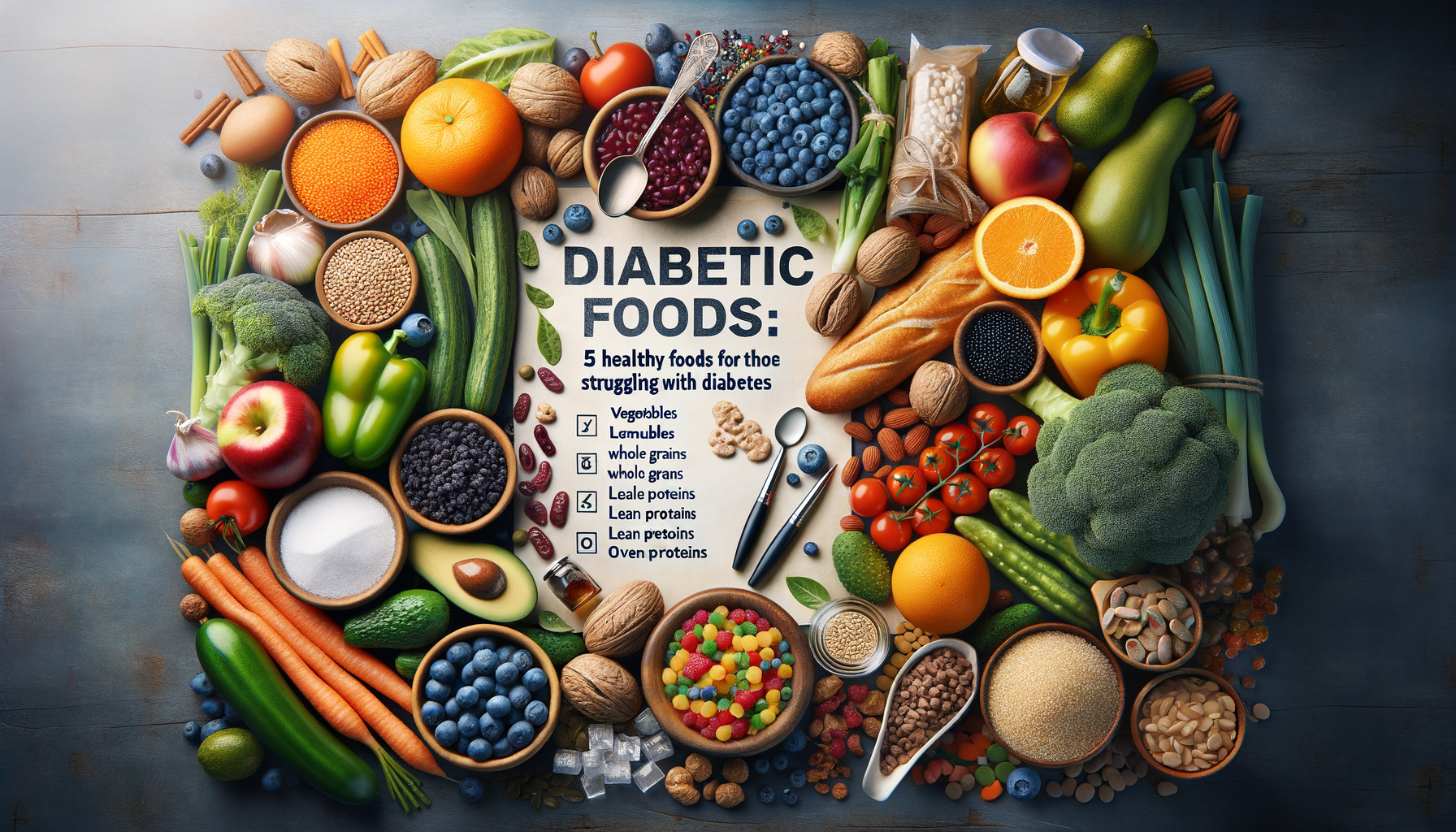
5 healthy foods – if you struggle with diabetes!
Understanding the Importance of Diabetic Foods
Diabetes is a chronic condition affecting millions worldwide, characterized by high blood sugar levels. Managing diabetes effectively often involves dietary adjustments, making the choice of foods critical. A well-balanced diet can help maintain blood sugar levels within the desired range, reducing the risk of complications such as cardiovascular disease and nerve damage. The primary goal is to choose foods that have a low glycemic index (GI) and are rich in nutrients, fiber, and healthy fats. This approach not only aids in stabilizing blood sugar but also promotes overall health.
For individuals with diabetes, understanding the impact of different foods on blood sugar levels is crucial. Foods with a high glycemic index can cause rapid spikes in blood sugar, while those with a low index provide a more gradual increase. Incorporating foods that are slowly digested and absorbed can help in managing glucose levels effectively. Additionally, focusing on portion control and meal timing plays a significant role in diabetes management.
Key considerations for a diabetic diet include:
- Choosing whole grains over refined grains.
- Incorporating a variety of colorful vegetables and fruits.
- Opting for lean proteins like fish, poultry, and legumes.
- Limiting saturated fats and avoiding trans fats.
- Monitoring carbohydrate intake and distributing it evenly throughout the day.
By adhering to these dietary principles, individuals with diabetes can lead healthier lives and reduce the risk of long-term complications.
Top Foods to Include in a Diabetic Diet
When it comes to managing diabetes, certain foods stand out for their health benefits and ability to regulate blood sugar levels. Here are some highly regarded options to consider incorporating into your diet:
1. Leafy Greens: Vegetables like spinach, kale, and collard greens are low in calories and carbohydrates, making them an excellent choice for diabetes management. They are rich in vitamins, minerals, and antioxidants, which help reduce inflammation and improve insulin sensitivity.
2. Berries: Blueberries, strawberries, and other berries are packed with antioxidants, fiber, and essential nutrients. They have a low glycemic index and can be a sweet yet healthy addition to a diabetic diet.
3. Whole Grains: Foods such as quinoa, brown rice, and whole oats provide a good source of fiber and nutrients. They are digested slowly, which helps keep blood sugar levels stable.
4. Fatty Fish: Salmon, mackerel, and sardines are rich in omega-3 fatty acids, which have been shown to reduce inflammation and lower the risk of heart disease—a common complication of diabetes.
5. Nuts and Seeds: Almonds, walnuts, chia seeds, and flaxseeds offer healthy fats, protein, and fiber. They can help manage hunger and improve blood sugar control.
Including these foods in your diet can contribute to better diabetes management, offering a variety of nutrients while keeping blood sugar levels in check.
The Role of Fiber in Diabetes Management
Fiber is a crucial component of a diabetic diet due to its numerous health benefits, especially in regulating blood sugar levels. Dietary fiber is found in plant-based foods and is classified into two types: soluble and insoluble. Soluble fiber dissolves in water and forms a gel-like substance, which can help lower blood cholesterol and glucose levels. Insoluble fiber adds bulk to stool and aids in digestion.
For individuals with diabetes, consuming a diet high in fiber can slow down the absorption of sugar, leading to more stable blood sugar levels. Foods rich in fiber include fruits, vegetables, whole grains, legumes, and nuts. These foods not only provide essential nutrients but also help in maintaining a feeling of fullness, which can prevent overeating and aid in weight management.
Research suggests that a high-fiber diet can improve insulin sensitivity, reduce inflammation, and lower the risk of developing type 2 diabetes. Aim to include a variety of fiber-rich foods in your meals, such as:
- Beans and lentils
- Whole fruits like apples and pears
- Vegetables such as broccoli and carrots
- Whole grains like barley and oats
- Nuts and seeds
By focusing on fiber intake, individuals with diabetes can better manage their condition and enjoy a range of health benefits.
Balancing Carbohydrates for Optimal Blood Sugar Control
Carbohydrates are a primary source of energy, but for individuals with diabetes, managing carbohydrate intake is crucial for maintaining optimal blood sugar levels. Carbohydrates are found in a wide variety of foods, including grains, fruits, vegetables, and dairy products. Understanding how different types of carbohydrates affect blood sugar is key to effective diabetes management.
Simple carbohydrates, found in sugary foods and refined grains, can lead to rapid spikes in blood sugar. In contrast, complex carbohydrates, found in whole grains and legumes, are digested more slowly, providing a steady release of energy. This slower digestion helps in maintaining stable blood sugar levels.
To balance carbohydrates effectively, consider the following tips:
- Choose whole, unprocessed foods over refined options.
- Read food labels to understand carbohydrate content and portion sizes.
- Distribute carbohydrate intake evenly throughout the day to prevent blood sugar fluctuations.
- Pair carbohydrates with protein or healthy fats to slow down absorption.
By making informed choices about carbohydrate consumption, individuals with diabetes can better control their blood sugar levels and improve their overall health.
Creating a Sustainable Diabetic Meal Plan
Developing a sustainable meal plan is essential for individuals managing diabetes. A well-structured meal plan can help maintain blood sugar levels, provide necessary nutrients, and fit individual lifestyle preferences. The key is to create a balanced diet that includes a variety of food groups while keeping portion sizes and carbohydrate intake in check.
When designing a diabetic meal plan, consider the following guidelines:
- Incorporate a variety of vegetables, focusing on non-starchy options.
- Include lean proteins such as chicken, fish, tofu, and legumes in meals.
- Opt for whole grains like quinoa, brown rice, and whole wheat pasta.
- Include healthy fats from sources like avocados, nuts, and olive oil.
- Limit added sugars and processed foods.
- Stay hydrated by drinking plenty of water.
Meal planning can also involve preparing meals in advance, which helps in sticking to dietary goals and avoiding last-minute unhealthy choices. It’s important to tailor the meal plan to individual needs and preferences, ensuring it’s enjoyable and sustainable in the long term.
By following these strategies, individuals with diabetes can create a meal plan that supports their health goals and enhances their quality of life.


